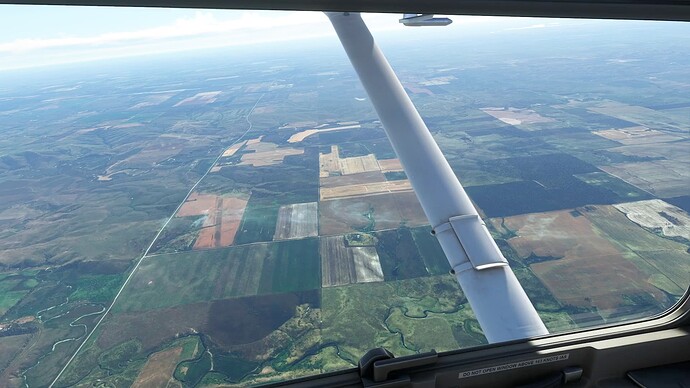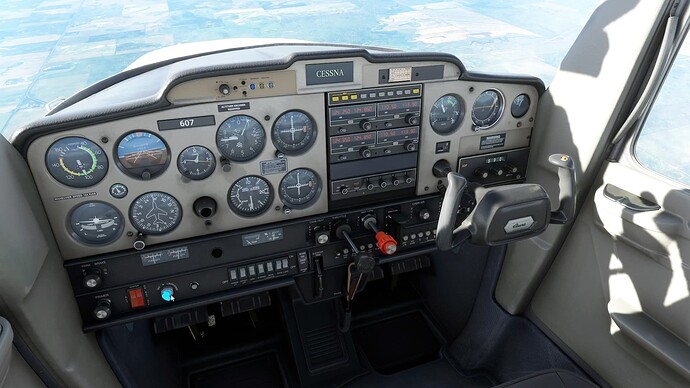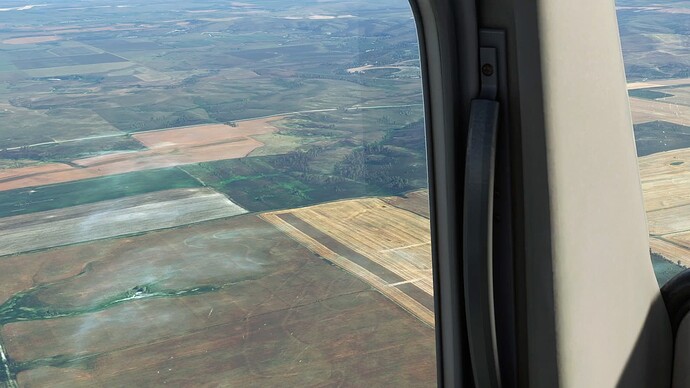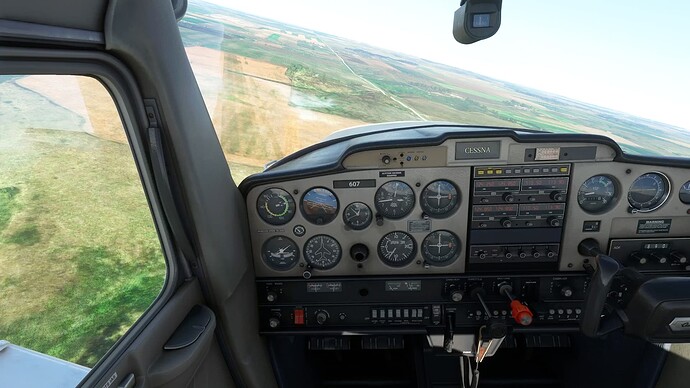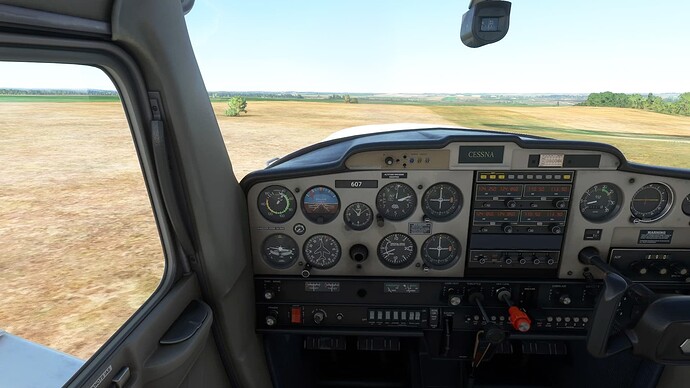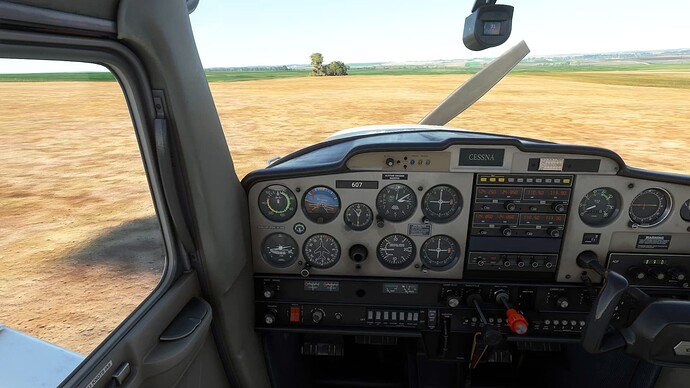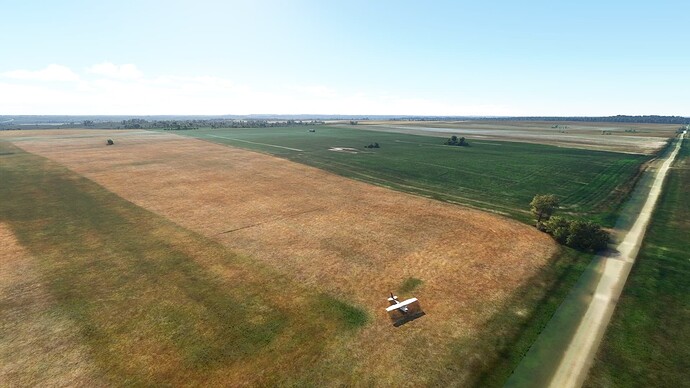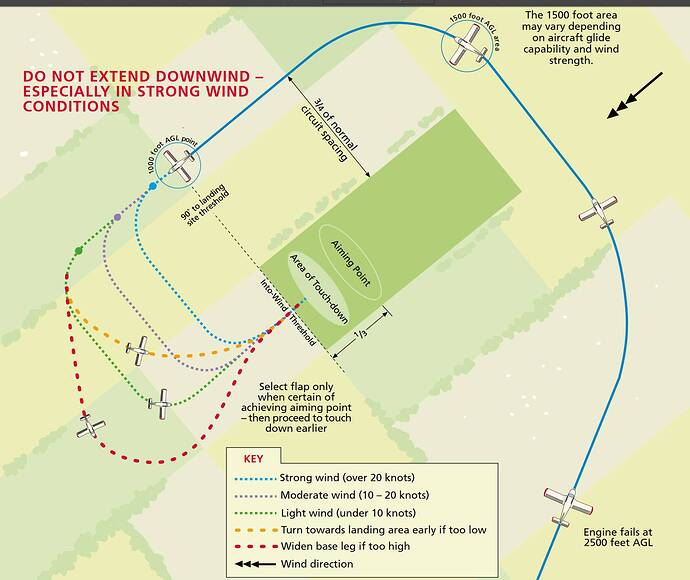While trying to lean into more responsible flight planning and emergency preparedness, I’ve started injecting off-airport/forced landing scenarios into some of my MSFS journeys. Although the game won’t reproduce the physics of a soft, rugged, rutted field, or power lines and road signs, I’m growing to appreciate the idea of scanning for the most survivable landing spots and getting a feel for glide-to-landing time frames and constraints.
Today’s engine failure occurred north of Thunderhawk, North Dakota, USA.
The process I’m using so far, is to zoom far back on World Map, roughly select a general area for an in-air departure. Then zoom in just close enough to select a distant, unreachable airport for destination so I’ll have access to Nav Log altitude selection. Then set Nav Log altitude to a height above ground level I might find myself flying in that kind of scenario, say 5,000 ft over hilly farmland in the northern Plains.
Once the flight loads up and we’re in motion, I’m giving myself a count of 30 to do a from-the-cockpit scan of the surrounding terrain, roads, fields, bodies of water, etc. — gaining some degree of awareness I’d already have flying into the area.
After the count, pull mixture fully out, throttle to zero and shut off ignition.
From there, a bit of vicarious clenching, then pitch to best glide and start searching/evaluating best landing ops before angling for an approach and bringing it in for a hopefully survivable landing. Working on holding 60-65kts for best glide with the C-152 with no flaps extended. Out the windows on this one, a blend of wooded lots and green or harvested/plowed fields in this area, with multiple creek drainages throwing a good dose of hills into the mix.
A couple old, maybe-airfields catch the eye, southeast of my position. Both are surrounded by reasonably smooth looking fields. Nothing better seemed to be available elsewhere, so make a gradual left turn in their direction to decide which to take. The closer, 90° strip starts to look more like a narrow patch of freshly tilled field with a couple road-like crossings over it, so that’s more sketchy than it initially looked.
So, went next for the further 350°-ish field which seriously looked like an old, faded airfield, but getting closer, definitely looked planted over. It’ll have to do. Finish angling onto makeshift base and drop first level of flaps.
Getting lower on short final and drop second level of flaps. Better relief becomes visible in the terrain and that dark strip up there looks increasingly ditch-like. Time to quickly but smoothly hedge left and go for the less creased, adjacent portion of the field that also has a sturdy looking tree hanging out down there to keep uninvited guests honest.
Flaring and trying to keep the stall horn from sounding until just before contact. Hope there isn’t a fast moving, suicidal deer hiding behind that tree.
Working to finesse the nose, keep it off the ground as long as possible, and resisting the urge to apply any braking. Finally need a bit of braking, once speed is low enough, to keep from rolling into fence, ditch & road at end of the field.
And there she sits, waiting for a tow trailer and awkward conversations with the farmer & curious neighbors. IRL, any number of extra, non-sim-able problems such as snagging on stray barbed wire in the field, going end-over after sinking into a prairie dog colony, last bit of braking maybe having zero effect & winding up in the fence, etc.
Things I need to start adding to that process —
- Dialing 7700 on transponder
- Mocking up a distress call to ATC with position and condition (playing on XBOX-X, so no Vatsim, just self verbalizing)
- Working on engine re-start procedures on the way down (with idea of forcing it to fail most times to get full amount of practice in).
- Mentally or in-sim going through motions of executing inbound & pre-contact steps — safety harness tightening, door open, fuel off, electric off & other steps I’m still researching.
- Adding other scenarios with higher & lower altitudes as well as engine failures immediately after take-off.
So who else doing this sort of thing?

